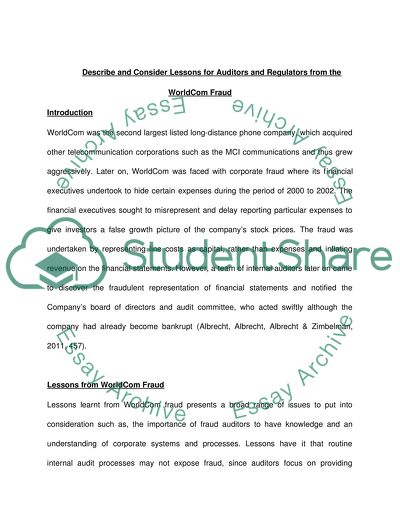Cite this document
(“Lessons for Auditors and Regulators from the WorldCom Fraud Essay”, n.d.)
Retrieved from https://studentshare.org/finance-accounting/1395657-auditing-describe-and-consider-lessons-for
Retrieved from https://studentshare.org/finance-accounting/1395657-auditing-describe-and-consider-lessons-for
(Lessons for Auditors and Regulators from the WorldCom Fraud Essay)
https://studentshare.org/finance-accounting/1395657-auditing-describe-and-consider-lessons-for.
https://studentshare.org/finance-accounting/1395657-auditing-describe-and-consider-lessons-for.
“Lessons for Auditors and Regulators from the WorldCom Fraud Essay”, n.d. https://studentshare.org/finance-accounting/1395657-auditing-describe-and-consider-lessons-for.


